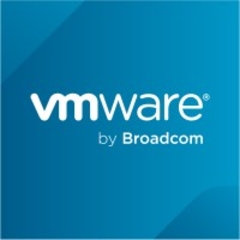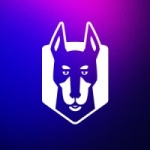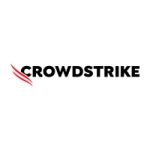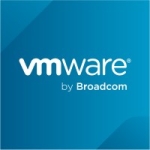What is our primary use case?
VMware Aria Automation is mainly used with vRealize Orchestration to orchestrate provisioning. It segregates resource usage among different teams. If there are various tenants utilizing resources, vRA is essential for efficiently managing resource allocation. Whether it's provisioning machines in our data center, supporting customer infrastructure in AWS, Azure, or different vCenters, vRA streamlines the process.
Instead of navigating through various console endpoints for provisioning workloads, vRA allows automation with a single click. This means we can automate the provisioning of not just a plain VM or OS but also include applications and databases in a single click.
So, we can initiate the process, go about our tasks, and, within 30 to 40 minutes, depending on integrations, our VMs will be built. It significantly reduces manual efforts, and that's why it's called automation.
With one click, we can get not just one but as many VMs as needed, with databases installed, all at the click of a button. It's a crucial and necessary product that people have been increasingly adopting.
What is most valuable?
VMware Aria Automation is important for day-to-day operations. It provides more granular visibility of our resources.
Another valuable thing is the cost. We can easily get to know our IT gives us a cost of data as well, suppose we're going to provision any VM, if a customer or if a user is going to provision one VM, it depends on, again, it depends on the integration that one has done of config already.
One of its features is, that once we're deploying a VM, we will get to know how much we'll pay for that. How much will be the GB storage per GB cost, how it will be the RAM cost, memory cost, everything would be there.
And it gives us in-depth visibility into how many resources we are paying for. And suppose we just were purchasing memory GB and if we want to delete particular VMs, we can delete it and we can get the resources back.
So for the customers, it's pretty convenient to see where they are putting their money into.
What needs improvement?
It's not open source as of now. The licensing costs and the operations support costs of the VRAs are higher. It's a VMware-based license.
If I see the other competitors, they are open-source alternatives to VRA, like OpenStack and others. So I can use it on the flow. But in order to get VLS automation, it's an enterprise license that costs more, and hence, VMware support cost is also more.
For how long have I used the solution?
I have experience with this solution.
What do I think about the stability of the solution?
It is stable. But one of the drawbacks that Aria Automation had whenever there used to be an upgrade was that it never used to be very easy. It takes effort to upgrade from the current version to the new version. There used to be some challenges and changes that had to be done.
The most recent release is based on the Kubernetes nodes now. So, it is easy now but it is not that easy because, with every new release, VMware comes up with something new.
And how to adapt to new things and how to configure those things. And what all from the previous version will still get supported in a new version is always a new thing for us as well.
What do I think about the scalability of the solution?
It is scalable. However, you cannot increase the number of VMware nodes on the fly. For instance, if you deployed it to a three-node cluster, you cannot simply expand that cluster. Instead, you have to deploy a new cluster with a new set of nodes.
I work in a product-based company, so we have customers for this solution in a service-based company, where we have a direct understanding of the number of customers we're supporting, whereas, in a product company, we only have access to customer usage data.
How was the initial setup?
We can automate your workloads both on-premises or any software data center where you want that to be in. If we want that to be in the cloud, it's fine. If we want to provision it on-premises, it is fine. The installation is mostly done on devices. But as with AWS, if we want to use Google, if you want to use Azure, we can use those as endpoints to the VLS automation. And from the same console, we can automate workloads to be provisioned either on VMware Center, that is our own premises or onto our public cloud. So, VMware Aria Automation is there to automate your provisioning or any day one and day two operations. We can do it from one pane of glass to any endpoint, let it be cloud, or let it be our own premises.
So it doesn't have to be specific on AWS cloud or Azure cloud.
What about the implementation team?
The setup needs coding. It's not easy. It's not straightforward. With the newest releases that we have ahead, we need someone who is good with the YAML codes.
Now, there has been improvement. Previously, we should have a person who really knows Java, Python, and other codes that are being used.
But for the recent release, we want one who should understand codes, one who should know how to, and one who should have knowledge about how to do REST API calls if we want to integrate different components with VRA.
So, programming knowledge is a must when you're using VRA. The most tedious task will be to configure the VRA. Installation is easy; you can do it.
However, configuring VRA with the whole of your setup within the data center is not easy. It will take some effort, and it has to be done right.
The deployment process is not fast. It will be time-consuming. A few of the modules are already there, but it is time-consuming. Moreover, it depends on the sort of integrations we want to do. If we want to integrate 15 components, different components with vRA for end-to-end provisioning, it will be consuming.
What other advice do I have?
I strongly recommend gaining a thorough understanding of Aria before diving into it. Aria is not as straightforward as it initially appears. There are numerous aspects to consider, such as integrations, VRA usage, VRO, and so on.
It's crucial to comprehend how Visualized Orchestration, Sensor Automation, and Sensor Orchestration work together harmoniously when orchestrating workflows. You really need to get proper VRA training before effectively utilizing it. It's not something you can pick up easily just by having coding knowledge. Some level of experience and training is essential for thorough usage.
Overall, I would rate the solution a nine out of ten. VMware Aria Automation has made a lot of things easier. It has really helped the operations team to spin up the virtual machines. Previously, if setting up infrastructure for the customer took weeks, now it can be done in a couple of days. It has reduced the time for the customers to get the infrastructure ready. So, I would definitely rate it nine. This solution has done a fabulous job over time.
Disclosure: My company does not have a business relationship with this vendor other than being a customer.




















Pros:
- VMwared Aria Automation (vRA) give flexability to create & manage a multivendor cloud infrastructure.
- End users can self-provision VMs, applications & IT services according to policies defined by administrators.
- Can use Code Stream to automate your entire DevOps release life cycle, while you continue to use your existing development tools, such as Git and Jenkins.
- With Code Stream, We create pipelines that automate our entire DevOps life cycle while using existing development tools, such as Git and Jenkins. We create a pipeline that runs actions to build, deploy, test, and release our software.
-------------------------------
- Integrate vRO with other 3rd parties’ products (like; Blue Cat, InfoBlox, Ansible, Power Broker…etc.) to provide customized services that following company security policies for daily operations.
- Can integrate with vCloud Director to provide vRA blueprints, Day-2 services,...so to vCD customer tenants; which extend the functionality of vRA.
- Ability to consume on-prem services on public cloud for the same customer without need other solutions.
Cons:
- VMware suffers from bad support for Aria Automation "vRA & NSX-T"
- From different real cases with VMware; they took months to figure out issue & couldn't provide expected level of customer satisfaction.
- Multi-tenancy is possible but within a “Project”. It is not currently
possible to provide two users with different catalog views.
- Reservations have been removed, but Cloud Zones provide limits.
- Upgrade from previous versions to 8 can be significantly complex; so VMware only provide Green-environment deployment due to migration limitation